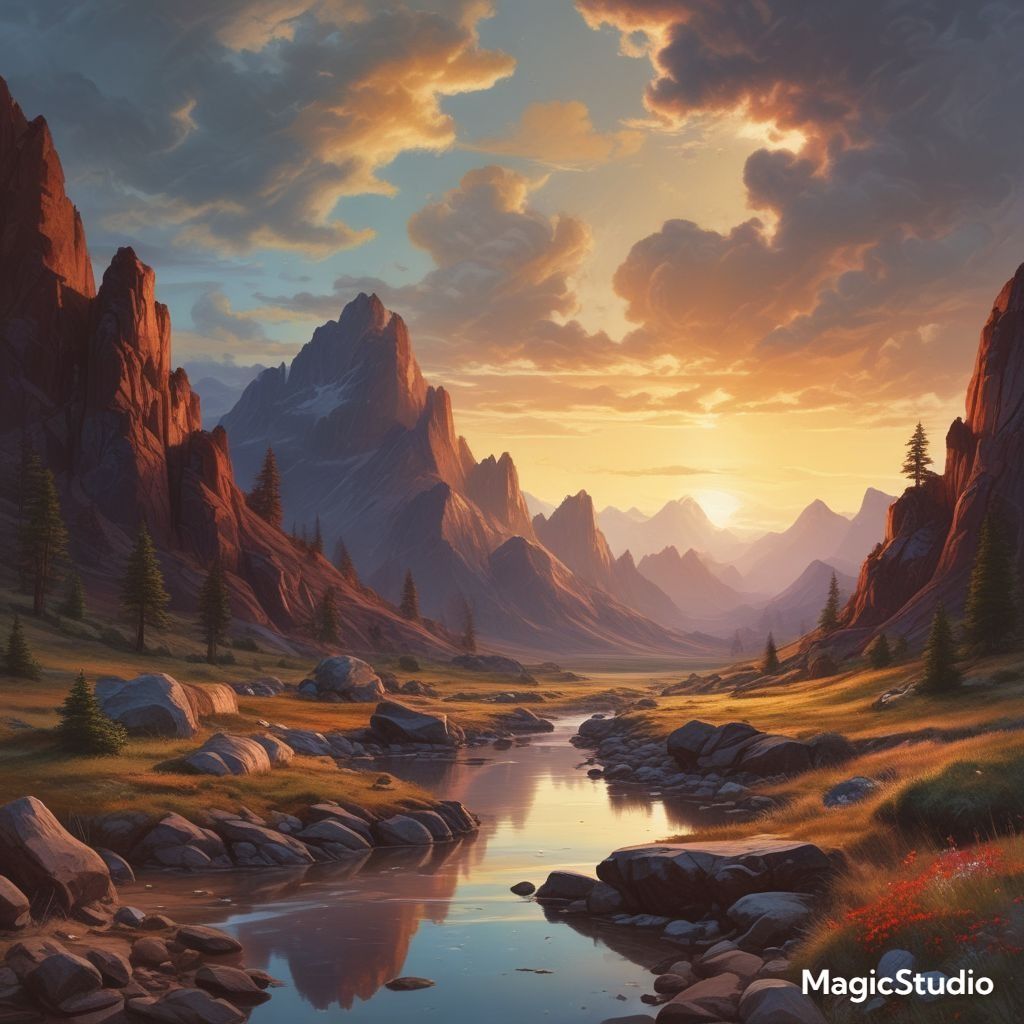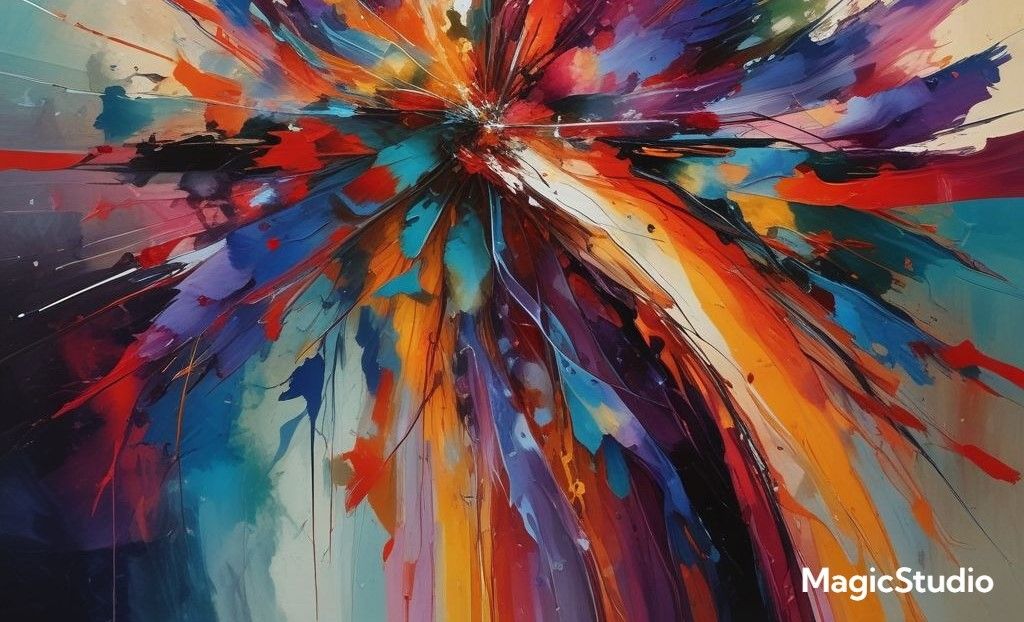What is AI Generated Art?
Create stunning pieces of art by just inserting a basic prompt into an AI art-generating tool. Learn how artificial intelligence can make you a great artist.

Do you still remember the pre-internet era when to click a desirable photo, we used to visit numerous places? Then came the internet revolution, ushering in a new age of abundance. Suddenly, we had access to a plethora of images at our fingertips, no longer bound by geographical constraints. We could sit back, relax, and browse through countless options, all from the comfort of our own homes.
But now, we find ourselves in an even more remarkable era: the age of artificial intelligence. Today, we can just insert a prompt and generate any type of image with a single click. Well, ‘creating images’ might sound fancy but this has turned into a reality today. You don't have to be a profound painter to give your imagination shape. All you have to do is tell the AI tool about what you are thinking and Tadaa… it will create an exact image for you. Mockingly, we are all self-acclaimed artists now, aren't we?
What is AI Generated Art?
AI-generated art is a form of digital art created by machine learning algorithms that analyze and interpret text-based prompts to generate unique visual representations.
Imagine a creative partnership where humans provide the vision and artificial intelligence brings it to life. AI-generated art is an outcome of such a collaborative process where you just have to insert a prompt describing your desired image and the AI works its way to give you an AI-generated art piece. The image that we see after this process is made with generative AI. It is a technology that finds patterns among datasets and uses machine learning algorithms to create fresh content.

The process to get AI-generated art is quite simple. It works on text-to-image models. As the user, all you have to do is enter a prompt. The AI tool you are working on will then analyze your prompt. It will interpret the information to find a similar pattern among the millions of datasets that are fed into the system. It will then modify it as per the prompt and deliver you a new image.
How Does AI Generate Art?
Initially, the system is saturated with data sets, which consist of millions and millions of image and text pairs. Then it is trained with machine learning algorithms and patterns, which help the system identify and establish a relationship between text and image. For instance, when you enter a prompt like “a mango tree," the AI tool will first try to interpret the prompt. Then, through the machine learning algorithms, it will try to establish a pattern among the data sets to get an image of the mango tree.
Several generative AI models are involved in making the image appear more realistic. They function with the help of two neural networks. These models help the system modify the image obtained from data sets so that the resulting image matches the text entered as the prompt.
For a deep understanding of how AI generates art, you can check out our in-depth article on the subject here.
Looking at the popularity of AI-generated art, we can easily assume that there are numerous AI-generated art tools available for our convenience. If you want to explore AI art generators, then you must try some widely used AI tools like DALL.E., Midjourney, Stable Diffusion, and Magic Studio.
For your convenience, we have an article listing the best AI art-generating tools available. Take a look here.
Styles and Applications of AI Art
AI art tools let you create amazing artwork in different styles just by describing what you want. You can make anything from trippy abstract art to super realistic images. All you do is type in details about the style and what you want the art to look like. The AI then makes it for you. It's like magic!
These tools give you tons of creative freedom. You can make dreamy landscapes, lifelike faces, or totally new things. AI art is changing how we make and enjoy art. It puts the power to create in your hands in a whole new way.
- Abstract Art: Beyond the limitations of traditional art, AI art generators may create compelling abstract pieces where colors swirl and shapes alter. Viewers are taken on a journey of contemplation and awe by these works of art, which arouse feelings and spark the imagination.

- Realism: On the other end of the spectrum, AI can produce strikingly realistic images that blur the line between the digital and the physical world. These hyper-realistic artworks capture every intricate detail. They create a sense of awe and realism by capturing everything from the play of light on surfaces to the textures of materials.
- Illustrations and Concept Art: AI's artistic abilities also extend to concept drawings and graphics, with a vast array of styles ranging from lighthearted and humorous to somber and evocative. Artists can use AI to explore and refine their ideas and bring to life visually stunning worlds that captivate and inspire.

AI-generated art is having a big impact on the digital collectibles market with NFTs (Non-Fungible Tokens). These distinctive digital assets are reshaping the art market by giving collectors the chance to acquire one-of-a-kind digital works and artists new platforms to show their work.
The potential is endless as AI art develops further. AI is turning into a vital tool for artists, improving both human-made art and personalized creations. In order to broaden the boundaries of expression and creativity, humans and machines will work together to create art in the future.
While the increasing prevalence of AI-generated art raises thought-provoking questions about ownership, copyright, and the nature of creativity, it also presents exciting opportunities for artists to push the boundaries of what is possible in the realm of visual expression.
AI Art vs. Traditional Art
With the emergence and popularity of AI art, the difference between man-made and machine-made art is blurring.

Although AI art demonstrates algorithmic potential, endless results, and predictive creativity, it can never go beyond the data sets that are fed into its system. Artificial intelligence clearly lacks human emotions, understanding, intuitions, and insights.
We must not ignore the fact that artificial intelligence is a human creation. And, no human creation can surpass human creativity. AI art might become a quick option, but it can never match human aesthetics. AI can never become a “true” artist because it lacks creativity, the most important factor defining “true” art.
Apart from this, the issue of ownership and authorship is one of the biggest ethical concerns. Who can claim its ownership—the human creator who developed the algorithm or the machine that produced the artwork? AI art and its ethical implications still remain undefined around the issue of intellectual property and copyright.
Stepping into a technologically flourishing era, collaboration is always preferred to replacement. So, human creativity, along with artificial intelligence, might do miracles.
AI-Generated Art and Times Ahead
We are in times of flourishing artificial intelligence. We are already astounded by its outcomes and implications. There is a lot more to witness. The future of AI art is filled with potential. With more sophisticated algorithms and extended data sets, AI will now create images that were never seen before.
AI art may not be a replacement, but it is definitely a human creativity enhancer. And, you can say it is definitely inevitable now. You must skill yourself with AI art tools, as artificial intelligence is the new future.
As we move into this new era, it's essential to work together, combining the strengths of both humans and artificial intelligence. The future will undoubtedly see AI playing a significant role, in shaping how we express creativity. It's not about AI taking over but about humans and machines working in harmony to explore new possibilities.
The art world is evolving, blending human creativity with AI's analytical abilities to create great works that surpass our imaginations.
